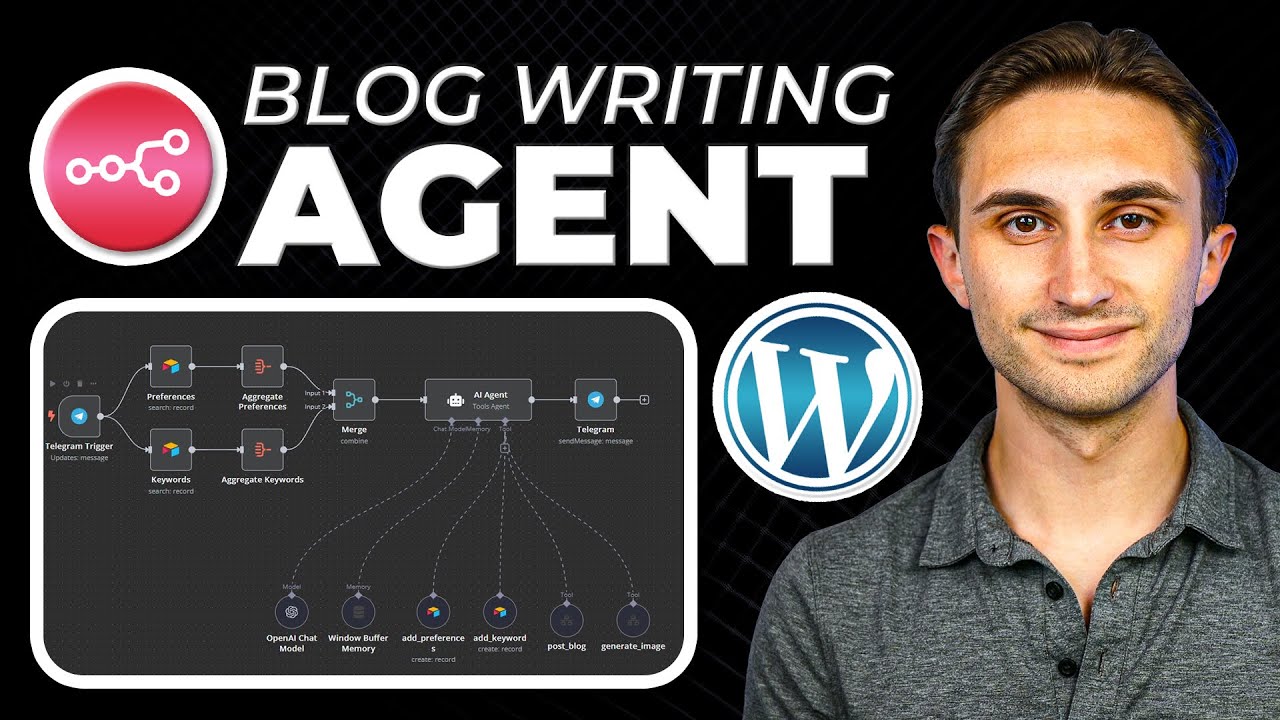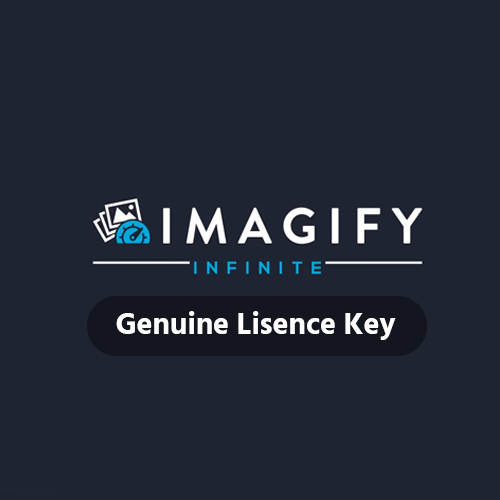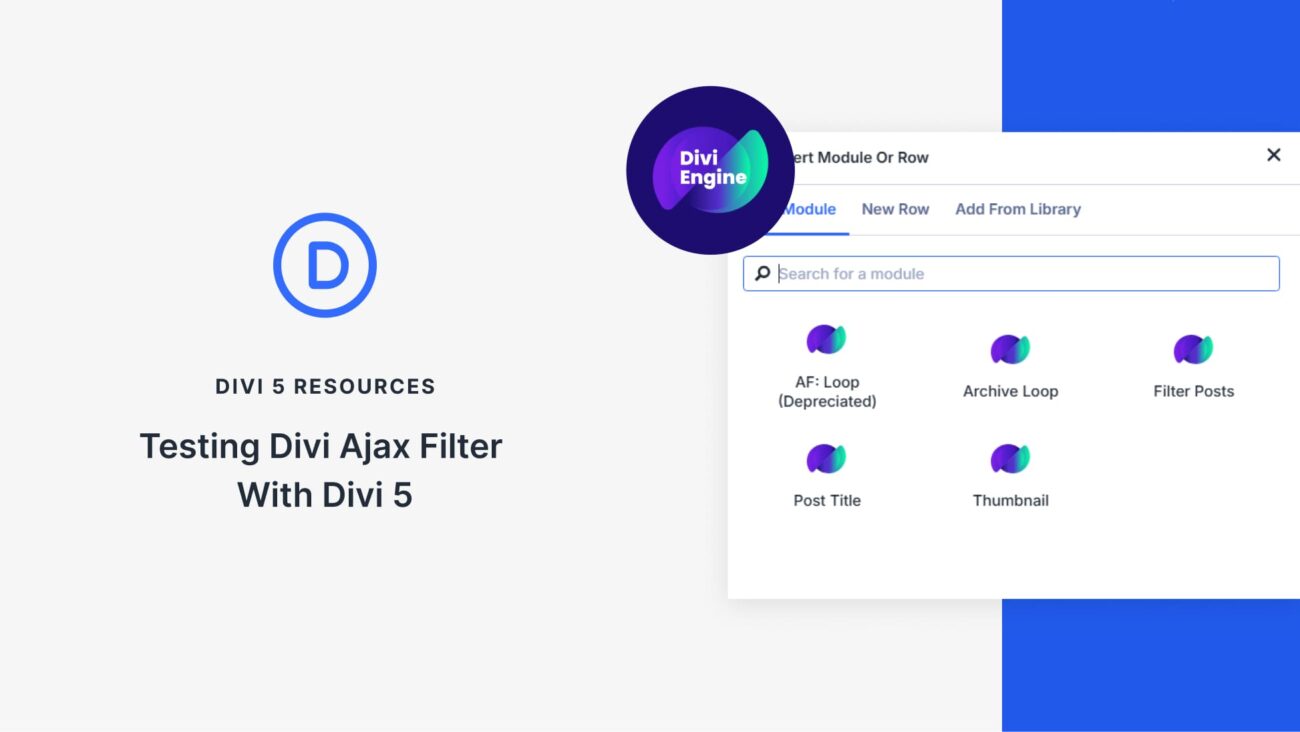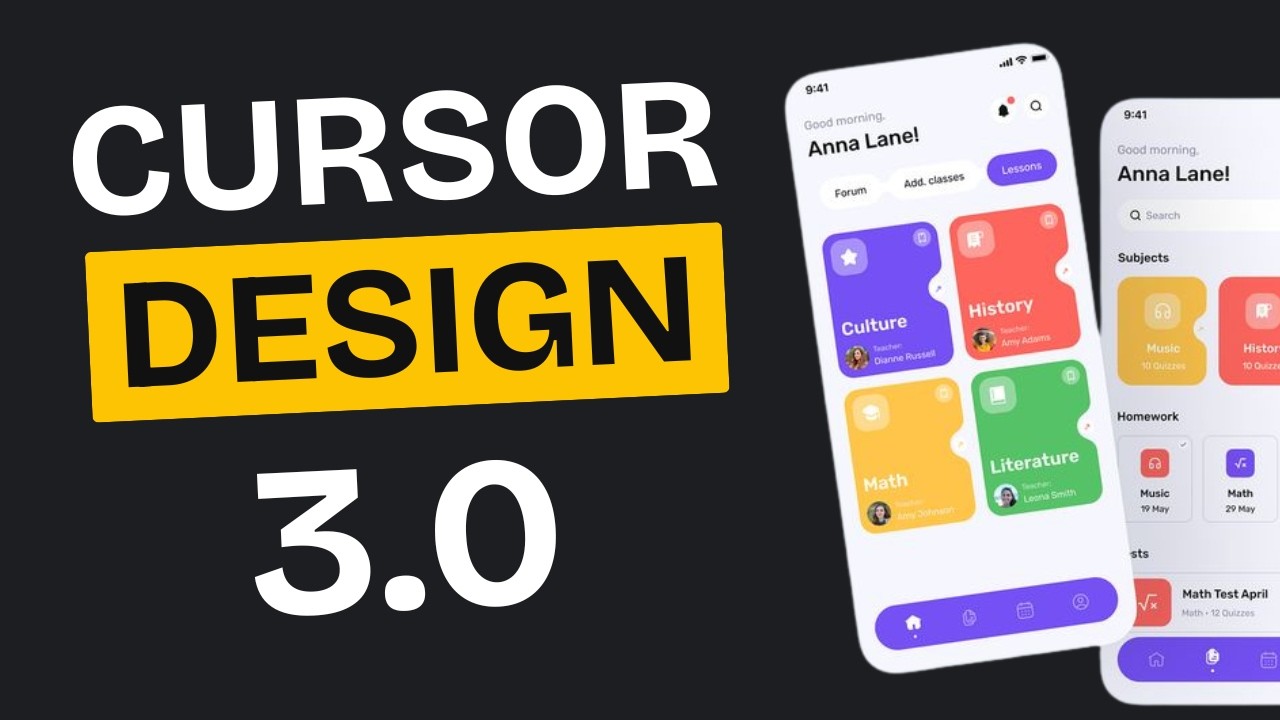Blog
Why Automate Blog Writing with n8n?
In today’s fast-paced digital landscape, businesses and content creators are constantly seeking ways to streamline workflows and reduce manual effort. Blog writing, while essential for SEO and audience engagement, often consumes significant time and resources. Enter n8n, a powerful workflow automation platform that enables users to build custom AI agents capable of generating blog content autonomously. By leveraging n8n’s integrations with AI tools, you can create a system that drafts, formats, and even optimizes articles—freeing you to focus on strategy and creativity.
This guide will walk you through designing a bespoke blog-writing agent using n8n, ensuring your content pipeline remains efficient and sustainable.
Understanding the Role of AI in Content Automation
Artificial Intelligence has revolutionized how we approach content creation. Modern language models can generate coherent, contextually relevant text tailored to specific guidelines or brand voices. When combined with n8n’s workflow automation capabilities, these tools transform into proactive assistants that handle repetitive tasks like ideation, drafting, and SEO optimization.
With an AI-powered n8n workflow, you can:
- Generate topic ideas based on trending keywords
- Produce first drafts in minutes
- Ensure consistency in tone and formatting
- Automatically optimize content for search engines
The result? Faster turnaround times, reduced cognitive load, and scalability for high-volume content needs.
Prerequisites for Building Your n8n Blog-Writing Agent
Before diving into the technical setup, ensure you have the following:
- An n8n Account: Sign up for a self-hosted instance or use the cloud version.
- Access to an AI Writing Tool: Integrate platforms like OpenAI’s GPT-4, Claude, or Jasper via API.
- Content Guidelines: Define your brand voice, keywords, and structure preferences.
- SEO Tools (Optional): Consider integrating tools like SurferSEO or SEMrush for keyword optimization.
Step-by-Step Guide to Building Your Blog-Writing Agent
1. Setting Up Your n8n Workflow
Begin by creating a new workflow in n8n. Use the “HTTP Request” node to connect to your chosen AI model’s API. For instance, if using OpenAI, configure the node with the correct endpoint, headers, and authentication keys. Set parameters such as temperature (to control creativity) and max_tokens (to limit response length).
Pro Tip: Use n8n’s “Function” node to preprocess prompts or post-process generated content—for example, removing markdown formatting or appending a call-to-action.
2. Designing the Content Generation Process
Your AI agent needs clear instructions to produce quality drafts. Create a “Prompt Engineering” node that combines:
- A primary topic (e.g., “How to Build a Serverless API”)
- Target keywords (e.g., “serverless architecture,” “AWS Lambda”)
- Tone guidelines (e.g., “professional but conversational”)
- Structural requirements (e.g., headers, bullet points)
Use n8n’s “Merge” node to combine these inputs into a cohesive prompt. For repeatability, store templates in a Google Sheet or Airtable base and pull them dynamically using n8n’s integrations.
3. Adding SEO Optimization Layers
To ensure your blogs rank well, incorporate SEO checks into the workflow:
- Use the “Scrape” node to extract keyword suggestions from tools like AnswerThePublic.
- Integrate readability analyzers to maintain a Flesch-Kincaid score above 60.
- Automate meta description generation using a secondary AI query.
For advanced users, connect n8n to WordPress or Ghost CMS to schedule posts directly after approval.
4. Implementing Quality Control Measures
Automation doesn’t mean sacrificing quality. Add these safety nets to your workflow:
- Human-in-the-Loop Approval: Use n8n’s “Wait” node to pause the workflow until a team member reviews the draft.
- Plagiarism Checks: Integrate Copyscape or Grammarly APIs to scan content before publication.
- Multi-Model Validation: Cross-check generated content against a second AI tool to verify factual accuracy.
Best Practices for Sustained Success
- Iterate on Prompts: Regularly refine your AI prompts based on performance analytics.
- Monitor SEO Impact: Track keyword rankings and adjust your strategy using data from Google Search Console.
- Stay Updated: AI models evolve rapidly—recalibrate your workflows to leverage new features.
- Backup Manually: Keep a repository of human-written “golden samples” to retrain or benchmark your AI.
Extending Functionality Beyond Blog Writing
Once your core workflow is operational, explore these enhancements:
- Social Media Snippets: Add a node to auto-generate LinkedIn or Twitter posts promoting the blog.
- Multilingual Content: Use DeepL or Google Translate nodes to create localized versions.
- Analytics Feedback Loop: Connect Google Analytics to refine topics based on user engagement data.
The Future of Automated Content Creation
As AI becomes more sophisticated, tools like n8n will play a pivotal role in scaling content operations without sacrificing quality. By treating your blog-writing agent as a collaborative partner—rather than a replacement for human creativity—you empower your team to focus on high-impact tasks like audience research and storytelling.
Final Thoughts
Building an AI-driven blog-writing agent with n8n isn’t just about saving time—it’s about creating a strategic asset that grows with your brand. Start small, experiment with integrations, and gradually expand your automation scope. With the right setup, you’ll transform content production from a bottleneck into a competitive advantage.
Elementor Pro
In stock
PixelYourSite Pro
In stock
Rank Math Pro
In stock
Related posts
Microsoft Tests Intrusive Windows 11 Boot-Up Ads for Expired 365 Subscriptions
TOP 20: melhores plugins para seu WordPress (2025) | Turbine seu site com essas dicas 🚀
Free AI tools in wordpress for content, wireframes, design, images
5-Week AI Mentorship for Startups in SF
Testing Divi Ajax Filter With Divi 5
Best Websites to Download Free GPL WordPress Themes & Plugins in 2025
3 Ways to Build ACTUALLY Beautiful Websites Using Cursor AI
Global ERP Software Market to Hit $229B by 2033 Amid Tech Boom
Top 12 Robotics AI Blogs/NewsWebsites 2025
FREE WordPress Complete Course For Beginners 2025 | How To Make a WordPress Website
【AI解説】AIと対話しHP生成WordPress.com「AI Website Builder」使い方
Competitive Robotics Programs Build Skills for AI-Driven 2025 Workforce
Products
-
 Team Showcase – WordPress Plugin
Team Showcase – WordPress Plugin
$53.71Original price was: $53.71.$4.02Current price is: $4.02.In stock
-
 ChatBot for WooCommerce – Retargeting, Exit Intent, Abandoned Cart, Facebook Live Chat – WoowBot
ChatBot for WooCommerce – Retargeting, Exit Intent, Abandoned Cart, Facebook Live Chat – WoowBot
$53.71Original price was: $53.71.$4.02Current price is: $4.02.In stock
-
 FOX – Currency Switcher Professional for WooCommerce
FOX – Currency Switcher Professional for WooCommerce
$41.00Original price was: $41.00.$4.02Current price is: $4.02.In stock
-
 WooCommerce Attach Me!
WooCommerce Attach Me!
$41.00Original price was: $41.00.$4.02Current price is: $4.02.In stock
-
 Magic Post Thumbnail Pro
Magic Post Thumbnail Pro
$53.71Original price was: $53.71.$3.69Current price is: $3.69.In stock
-
 Bus Ticket Booking with Seat Reservation PRO
Bus Ticket Booking with Seat Reservation PRO
$53.71Original price was: $53.71.$4.02Current price is: $4.02.In stock
-
 GiveWP + Addons
GiveWP + Addons
$53.71Original price was: $53.71.$3.85Current price is: $3.85.In stock
-
 ACF Views Pro
ACF Views Pro
$62.73Original price was: $62.73.$3.94Current price is: $3.94.In stock
-
 Kadence Theme Pro
Kadence Theme Pro
$53.71Original price was: $53.71.$3.69Current price is: $3.69.In stock
-
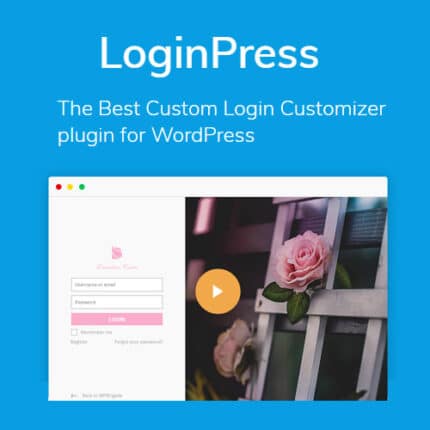 LoginPress Pro
LoginPress Pro
$53.71Original price was: $53.71.$4.02Current price is: $4.02.In stock
-
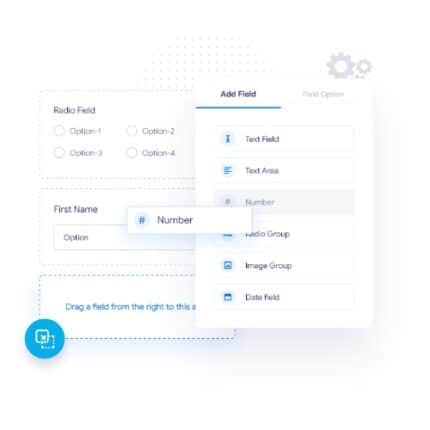 Checkout Field Editor and Manager for WooCommerce Pro
Checkout Field Editor and Manager for WooCommerce Pro
$53.71Original price was: $53.71.$3.94Current price is: $3.94.In stock
-
 Social Auto Poster
Social Auto Poster
$53.71Original price was: $53.71.$3.94Current price is: $3.94.In stock
-
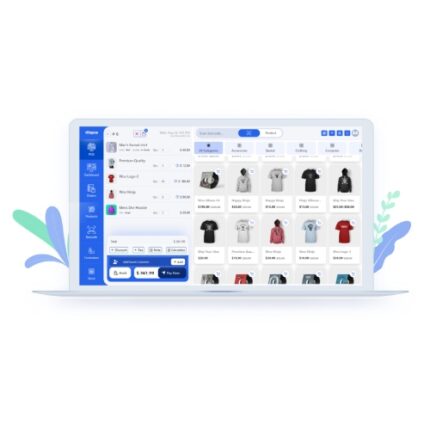 Vitepos Pro
Vitepos Pro
$53.71Original price was: $53.71.$12.30Current price is: $12.30.In stock
-
 Digits : WordPress Mobile Number Signup and Login
Digits : WordPress Mobile Number Signup and Login
$53.71Original price was: $53.71.$3.94Current price is: $3.94.In stock
-
 BookingPress Pro – Appointment Booking plugin
BookingPress Pro – Appointment Booking plugin
$53.71Original price was: $53.71.$3.94Current price is: $3.94.In stock
-
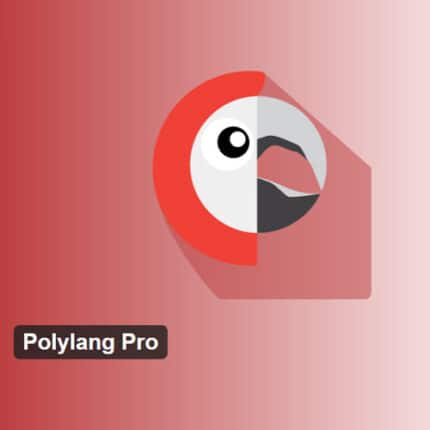 Polylang Pro
Polylang Pro
$53.71Original price was: $53.71.$3.94Current price is: $3.94.In stock
-
 All-in-One WP Migration Unlimited Extension
All-in-One WP Migration Unlimited Extension
$53.71Original price was: $53.71.$3.94Current price is: $3.94.In stock
-
 Slider Revolution Responsive WordPress Plugin
Slider Revolution Responsive WordPress Plugin
$53.71Original price was: $53.71.$4.51Current price is: $4.51.In stock
-
 Advanced Custom Fields (ACF) Pro
Advanced Custom Fields (ACF) Pro
$53.71Original price was: $53.71.$3.94Current price is: $3.94.In stock
-
 Gillion | Multi-Concept Blog/Magazine & Shop WordPress AMP Theme
Rated 4.60 out of 5
Gillion | Multi-Concept Blog/Magazine & Shop WordPress AMP Theme
Rated 4.60 out of 5$53.71Original price was: $53.71.$5.00Current price is: $5.00.In stock
-
 Eidmart | Digital Marketplace WordPress Theme
Rated 4.70 out of 5
Eidmart | Digital Marketplace WordPress Theme
Rated 4.70 out of 5$53.71Original price was: $53.71.$5.00Current price is: $5.00.In stock
-
 Phox - Hosting WordPress & WHMCS Theme
Rated 4.89 out of 5
Phox - Hosting WordPress & WHMCS Theme
Rated 4.89 out of 5$53.71Original price was: $53.71.$5.17Current price is: $5.17.In stock
-
 Cuinare - Multivendor Restaurant WordPress Theme
Rated 4.14 out of 5
Cuinare - Multivendor Restaurant WordPress Theme
Rated 4.14 out of 5$53.71Original price was: $53.71.$5.17Current price is: $5.17.In stock
-
 Eikra - Education WordPress Theme
Rated 4.60 out of 5
Eikra - Education WordPress Theme
Rated 4.60 out of 5$62.73Original price was: $62.73.$5.08Current price is: $5.08.In stock
-
 Tripgo - Tour Booking WordPress Theme
Rated 5.00 out of 5
Tripgo - Tour Booking WordPress Theme
Rated 5.00 out of 5$53.71Original price was: $53.71.$4.76Current price is: $4.76.In stock
-
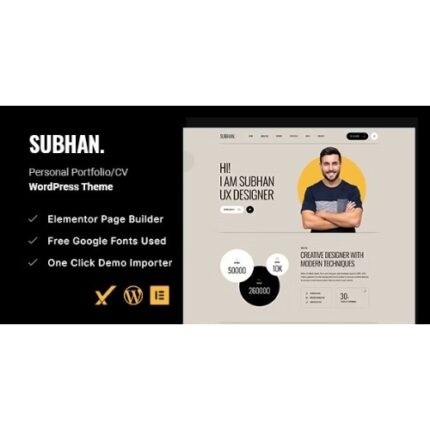 Subhan - Personal Portfolio/CV WordPress Theme
Rated 4.89 out of 5
Subhan - Personal Portfolio/CV WordPress Theme
Rated 4.89 out of 5$53.71Original price was: $53.71.$4.76Current price is: $4.76.In stock
-
 Travel Tour - Travel Booking WordPress
Rated 4.50 out of 5
Travel Tour - Travel Booking WordPress
Rated 4.50 out of 5$53.71Original price was: $53.71.$4.51Current price is: $4.51.In stock
-
 Eduma – Education WordPress Theme
Rated 4.33 out of 5
Eduma – Education WordPress Theme
Rated 4.33 out of 5$53.71Original price was: $53.71.$4.51Current price is: $4.51.In stock
-
 Airtech - Plumber HVAC and Repair theme
Rated 4.80 out of 5
Airtech - Plumber HVAC and Repair theme
Rated 4.80 out of 5$62.73Original price was: $62.73.$5.33Current price is: $5.33.In stock
-
 Bookio – Book Store WooCommerce WordPress Theme
Rated 4.20 out of 5
Bookio – Book Store WooCommerce WordPress Theme
Rated 4.20 out of 5$53.71Original price was: $53.71.$4.92Current price is: $4.92.In stock
